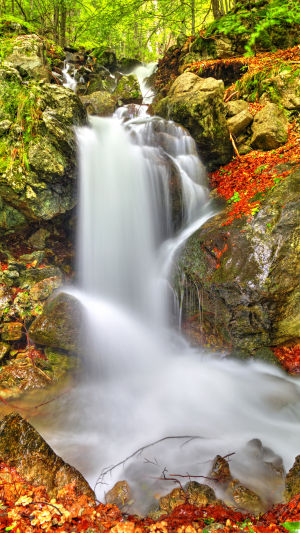Waterfalls are not just beautiful natural wonders; they can also be a powerful source of energy.
By capturing the energy from falling water, we can generate electricity in a clean and renewable way. Here’s how waterfalls can be used to produce power.
<h3>How It Works</h3>
The main parts of a hydroelectric power system are turbines and generators. When water flows over a waterfall, it can be directed into pipes or channels. As the water rushes down, it spins the blades of a turbine. This spinning motion is what generates electricity. The turbine is connected to a generator. Inside the generator, there are magnets that create electricity when they move. This electricity can then be sent out to homes, schools, and businesses through power lines.
<h3>Hydroelectric Power Plants</h3>
Most hydroelectric power plants are built near waterfalls or rivers with a significant drop in height. The height of the waterfall, known as the "head," and the amount of water flowing down determine how much electricity can be produced. Some well-known hydroelectric power plants that use waterfalls include:
• Niagara Falls: Located on the border between the United States and Canada, this site generates over a million watts of power each year.
• Three Gorges Dam: This is the largest hydroelectric power plant in the world, located in China, and it can produce more than 2 billion watts of electricity.
Nikola Tesla Harnessed the Power of Niagara Falls
Video by Science Channel
<h3>Benefits for the Environment</h3>
Generating electricity from waterfalls is a clean and renewable energy source. Unlike coal or gas, hydroelectric power does not release harmful gases into the air, making it better for the environment. The water used to generate electricity is not wasted; it can be used again for drinking, irrigation, or recreation. Additionally, the reservoirs created by dams can help control floods and store water for dry periods.
<h3>Small-Scale Hydropower</h3>
In addition to large power plants, waterfalls can also be used to create smaller amounts of electricity through micro and pico hydropower systems. These systems are designed to work with smaller waterfalls or streams and can generate power even from a drop of just a few feet.
Micro and pico hydropower systems are especially useful in remote areas where connecting to the main power grid is difficult. They can provide reliable electricity for homes, schools, and small businesses.
Waterfalls are a valuable resource for generating renewable energy. By using the force of falling water, we can produce clean electricity that benefits both people and the environment.





